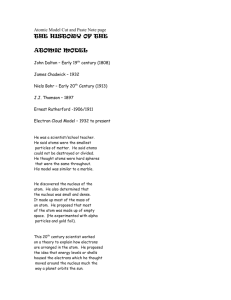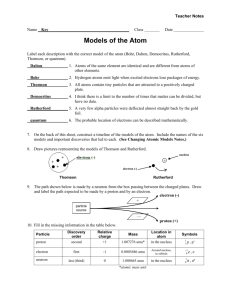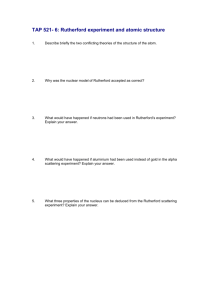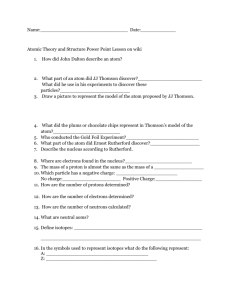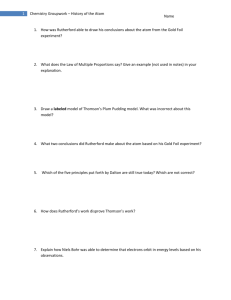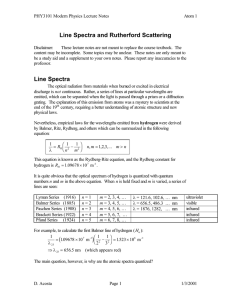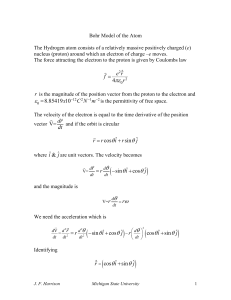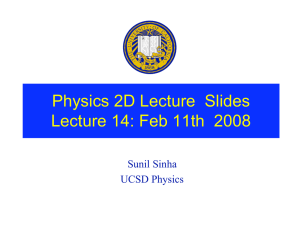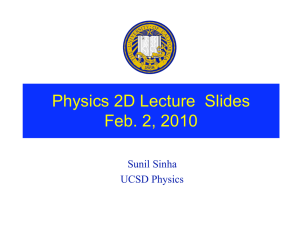Early Models of the Atom
advertisement
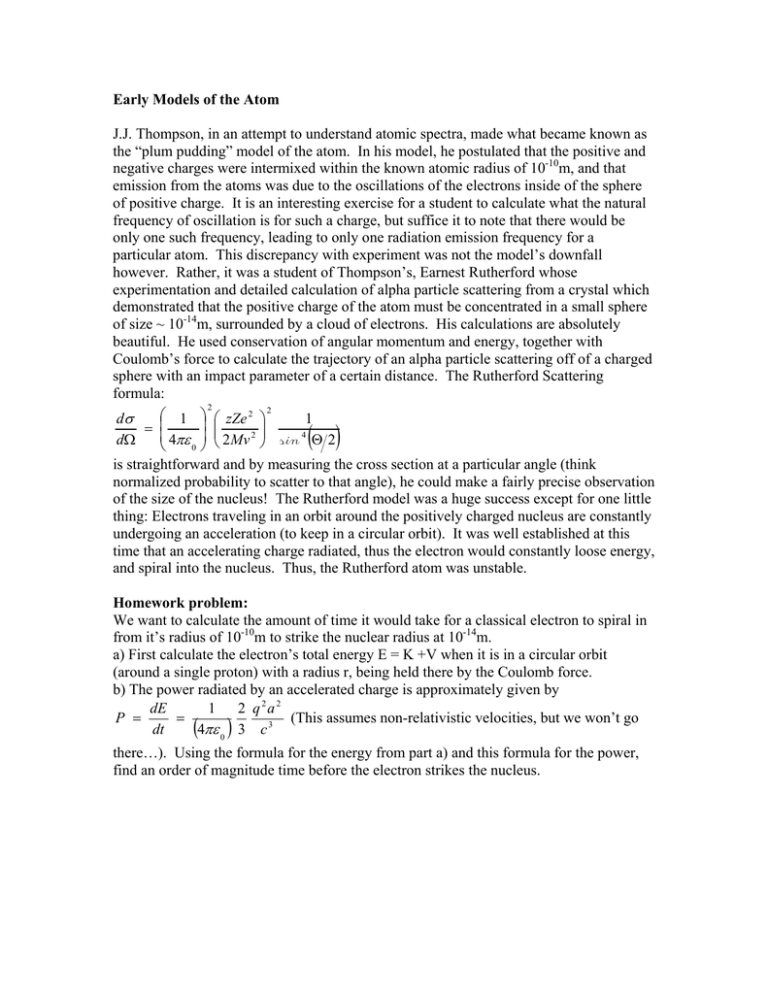
Early Models of the Atom J.J. Thompson, in an attempt to understand atomic spectra, made what became known as the “plum pudding” model of the atom. In his model, he postulated that the positive and negative charges were intermixed within the known atomic radius of 10-10m, and that emission from the atoms was due to the oscillations of the electrons inside of the sphere of positive charge. It is an interesting exercise for a student to calculate what the natural frequency of oscillation is for such a charge, but suffice it to note that there would be only one such frequency, leading to only one radiation emission frequency for a particular atom. This discrepancy with experiment was not the model’s downfall however. Rather, it was a student of Thompson’s, Earnest Rutherford whose experimentation and detailed calculation of alpha particle scattering from a crystal which demonstrated that the positive charge of the atom must be concentrated in a small sphere of size ~ 10-14m, surrounded by a cloud of electrons. His calculations are absolutely beautiful. He used conservation of angular momentum and energy, together with Coulomb’s force to calculate the trajectory of an alpha particle scattering off of a charged sphere with an impact parameter of a certain distance. The Rutherford Scattering formula: 2 ⎛ 1 ⎞ ⎛ zZe 2 ⎞ 2 1 dσ ⎟ ⎜ ⎟ = ⎜ 2 ⎟ 4 ⎜ ⎜ ⎟ dΩ ⎝ 4πε 0 ⎠ ⎝ 2 Mv ⎠ sin Θ 2 is straightforward and by measuring the cross section at a particular angle (think normalized probability to scatter to that angle), he could make a fairly precise observation of the size of the nucleus! The Rutherford model was a huge success except for one little thing: Electrons traveling in an orbit around the positively charged nucleus are constantly undergoing an acceleration (to keep in a circular orbit). It was well established at this time that an accelerating charge radiated, thus the electron would constantly loose energy, and spiral into the nucleus. Thus, the Rutherford atom was unstable. ( ) Homework problem: We want to calculate the amount of time it would take for a classical electron to spiral in from it’s radius of 10-10m to strike the nuclear radius at 10-14m. a) First calculate the electron’s total energy E = K +V when it is in a circular orbit (around a single proton) with a radius r, being held there by the Coulomb force. b) The power radiated by an accelerated charge is approximately given by dE 1 2 q2a2 = P = (4πε 0 ) 3 c 3 (This assumes non-relativistic velocities, but we won’t go dt there…). Using the formula for the energy from part a) and this formula for the power, find an order of magnitude time before the electron strikes the nucleus.
